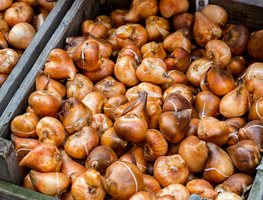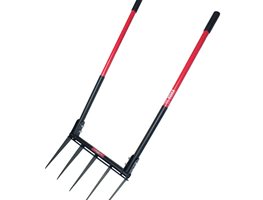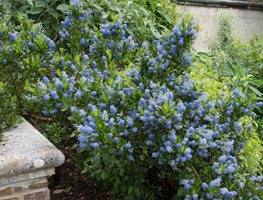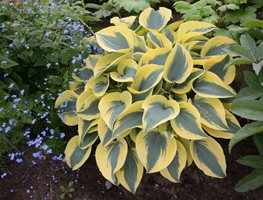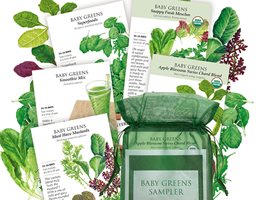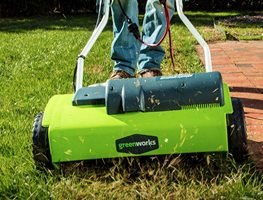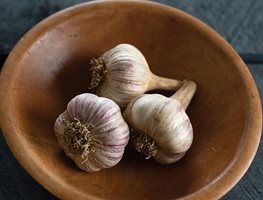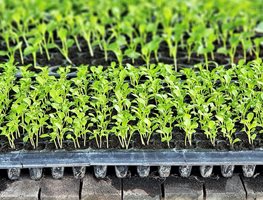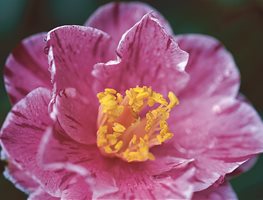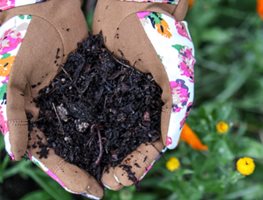10 Gardening Activities for September in Northern California
Here are a few garden reminders, inspiring ideas, and maintenance suggestions for your garden this month.
1. Shop for Bulbs
Although it won’t be time to plant bulbs until late-October through mid-December, you’ll want to order your bulbs this month to avoid missing out on the best ones that often sell out. In many Northern California climates, some bulbs such as tulips may need to be chilled. You can chill bulbs by putting them in a refrigerator for 4 to 6 weeks before planting (read more about how to do this) or order pre-cooled bulbs. If you live in a warm area, Van Engelen has a good selection of bulbs for warm climates. While you’re waiting to plant, store your bulbs in a cool, dark location that doesn’t have moisture.
2. Prepare for Fall Planting
If you haven’t started planting yet and your soil needs more nutrients, prepare your planting beds by adding compost or ready-to-use soil amendment. Spread the amendment over your existing soil at a depth of 1 to 3 inches. If you’ve been adding compost consistently throughout the year, just top dress around plants. It’s also a good idea to loosen compacted soil using a broad fork. This technique preserves the plant roots and soil biology while breaking up compacted soil (allowing air and water to penetrate further into the soil).
3. Plant New Garden Beds
September through the end of fall is the best time to plant perennials, shrubs, and trees. Fall’s conditions provide plants with the ideal growing environment—cooler, but still warm temperatures and extra moisture from rain. It’s especially important to get flowering shrubs such as lilacs, camellias, rhododendrons, viburnums, hydrangeas, and roses off to a good start, so they should be planted in September. Some of the best trees to plant include patio trees such as Japanese maples, crape myrtles, dogwoods, maples, redbuds, and magnolias. California natives should be planted this month and you can continue through the fall. For ideas on which natives to plant, check out the book The Drought-Defying California Garden: 230 Native Plants for a Lush, Low-Water Landscape by Greg Rubin and Lucy Warren, or visit the California Native Plant Society for more information. As you’re thinking about fall planting, a good place to get ideas or to see the mature size of plants you like is at botanic gardens.
4. Divide Hostas
If your hostas are overgrown for their space, you just want more around your garden, or they’re beginning to look crowded (which results in the center of the plant dying), then this is the time to divide them. In most regions in Northern California, September is a good time to divide hostas. To divide them, dig up the entire plant with a clean garden shovel or spade, trying to keep as many roots as possible intact. Place the plant and root ball on a tarp near the hole. Separate clumps and replant around your garden. Be sure to water new plants well. Learn more about growing and caring for hostas, or if you’re in the market for new hostas take a look at the varieties Proven Winners has to offer.
5. Continue Planting Cool-Season Crops
Once you’ve removed your summer crops, refresh beds with fertilizer and a fresh layer of compost. Fill your garden beds with cool-season vegetables such as broccoli, kale, peas, and carrots. You can also plant lettuce, mesclun, spinach, beet, and cauliflower. For seeds or starts visit Burpee, Johnny's Selected Seeds, Renee's Garden, or Botanical Interests. Check out these 15 picks for fall vegetable gardens.
Don't miss what to do in the garden each month, make sure you're getting our weekly newsletter.
6. Plant or Refresh Your Lawn
If you are looking to add a lawn to your garden, then September is your month. In more coastal climates, early in the month is ideal. In gardens that are farther inland, you can wait until late in the month once the temperatures cool. If you need more information on planting a lawn visit Toro's YardCare website which explains the different methods. To refresh an existing lawn consider dethatching manually with a specialized thatching rake or a motorized dethatcher. It’s also a good time to aerate lawns (try this Yard Butler manual aeration tool) and fertilize using either a granular fertilizer or compost.
7. Plant Garlic
Homegrown, freshly eaten garlic has especially good flavor. Try growing one of the many varieties of garlic available to add a special flair to your dishes next summer (if you plant them now, that’s when the bulbs will be ready to harvest). Order garlic bulbs from suppliers such as Burpee, Johnny's Selected Seeds, Seed Savers Exchange, Territorial Seed, or Harris Seeds. To plant garlic, divide bulbs into individual cloves. Plant cloves in well-draining, rich to medium soil at a depth of about 3 to 4 inches. Watch this video on planting garlic.
8. Grow Microgreens
Microgreens are packed with nutrients (see this study published in the Journal of Agricultural and Food Chemistry) and make nice additions to salads and garnishes. A small greenhouse, hoop house, or cold frame are all great spots to grow microgreens as they do better when they are grown under controlled or more consistent conditions. They also need consistent watering. Read more about growing microgreens at Johnny’s Selected Seed or watch this video.
9. Plant Now
Stagger plantings of early, mid- and late varieties of camellias and you can have flowers from November through April (or even May!) If the temperatures are still high, plant where they are protected from bright light or leaves may be scalded by the sun.
Providing year-round interest, crape myrtles are very resilient, love the sun, and are extremely heat tolerant. When planting, dig a hole twice as wide and just as deep as the container. Stake if needed and water thoroughly after planting.
Plant shrub roses in a sunny to lightly shaded site with fertile, well-draining soil that stays evenly moist for best results. You can also plant in a container, make sure the pot is at least 15 to 20 inches in diameter and 18 to 24 inches deep, with adequate drainage.
10. Online Learning
Go back to “garden school” this fall with online gardening courses taught by talented experts in their respective fields. Categories include gardening basics, garden design tips (like how to create a sustainable flower garden, deer-resistant design, or small garden design), container gardening, all about plants (like houseplants, aquatic gardens, hydrangeas, plants for the shade, perennials, and more), and edible gardening courses.
If you enjoyed this information, sign up for our weekly newsletter. Each week, you'll get Garden Design's best delivered right to your inbox including design tips, plant picks, great gardens, outdoor living products, and events to enjoy — along with monthly gardening checklists just for your area.
Do you know someone who would enjoy this Northern California Region gardening information? Why not share it with them?
When you purchase products through links on our site, we may receive an affiliate commission. Thank you for your support.
